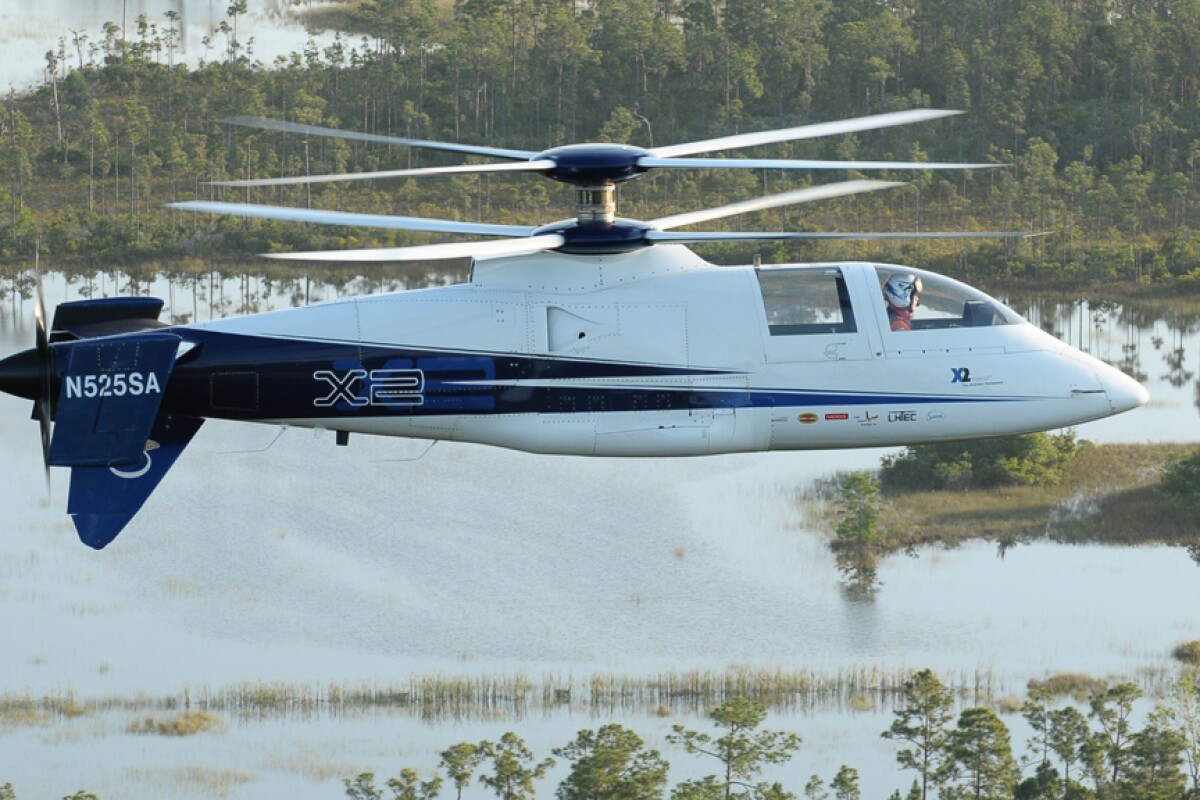Sikorsky Aircraft’s goal of producing the fastest helicopter ever built has taken another step towards becoming a reality. Its coaxial X2 Technology demonstrator has achieved a speed of 181 knots (208 mph) in a test flight – faster than the 160-170 knot speeds generally possible with conventional helicopters and edging closer to the eventual aim of delivering 250 knot (288 mph) cruising speeds.
As we’ve reported previously, the X2 demonstrator combines an integrated suite of technologies intended to advance the state-of-the-art, counter-rotating coaxial rotor helicopter. These include fly-by-wire flight controls, counter-rotating rigid rotor blades, hub drag reduction, active vibration control and an integrated auxiliary propulsion system.
After the latest test flight Jim Kaglis, Program Manager, Sikorsky Advanced Programs for Sikorsky, said, “the X2 Technology demonstrator today exceeded average helicopter speeds of a conventional helicopter, generally 160-170 knots.”
“The demonstrator is proving out the technologies very well, from the active vibration control system to the fly-by-wire controls. There are no show stoppers here so far, and now the program turns a corner, as this completes phase three of four. We are flying forward to the 250-knot cruise speed," Kaglis added.
Naturally speed isn’t the only feature Sikorsky is aiming for with its new helicopter technology. Attributes such as excellent low-speed handling, efficient hovering, and a seamless and simple transition to high speed are also desirable, and are all things that were successfully demonstrated on previous test flights.
In case you were wondering, the record of the world's fastest helicopter has been held for over 20 years by the British built Westland Lynx ZB-500, which reached 249.1 miles per hour (400.8 km/h) at a European air show in 1986.






